{Theo van Doesburg} : Introduction into Dimensional Design
The work I did during my residence at Maison Van Doesburg (2018) started as a research into the mechanics of abstraction. It transformed into an investigation into the mechanics of Theo van Doesburg, and ended as Abstract : Reality [language]; a scrapbook containing my findings.
I believe that after almost a century we still didn’t grasp the true intentions of Theo van Doesburg; a mystical figure by nature. He was eager to understand and define the rules of abstraction, and was only truly rivalled by his Uruguayan counterpart Joaquín Torres García. Their sole pursuit: create a universal language of abstraction.
To understand something, you must get into something, but to truly understand a person you must become that person. Instead, I chose to become a fox, to understand Theo van Doesburg, theoretically ~ figuratively.
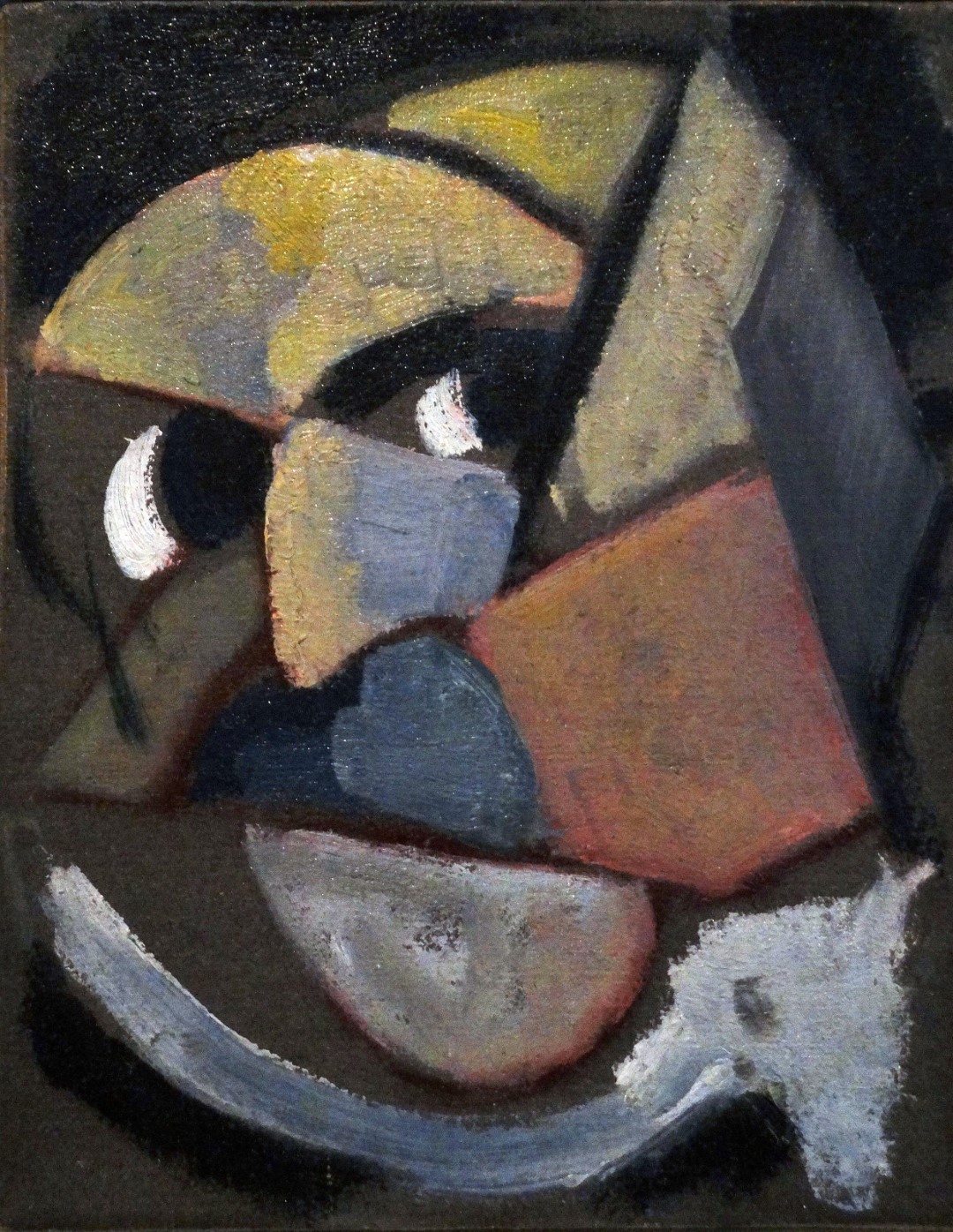
This essay is a small excerpt of a main body of work, explaining the role of Theo van Doesburg in De Stijl, and in the general history of abstract art.
Piet Mondriaan {Theo van Doesburg}
As we try to grasp the occurrences in history; we perceive time as a sequential event [Chronos]; chronologically, one frame following the other. We indicate the key-frames and describe main events. This idea works very well when the role of a main character has a chronologically developed body of work.
For example, we analyse the body of work of Piet Mondriaan; perceiving it one frame after another. The story seems logical and comprehensible. A step-by-step-play so to say, more compelling for a larger audience, because it’s easy to follow.
This idea of describing the history {of arts, or any other history} as sequential events has an impact on the position and role of certain characters; from which the body of work deviates on a sequential timeline. Theo van Doesburg being one of them, Joaquín Torres García being another, which I will discuss more profoundly in another essay.
Part of their work cannot be placed easily on the timeline, and is therefore (often completely) left out, as these works are presumed irrelevant acts in general history, influencing the position, and overall understanding of artists.
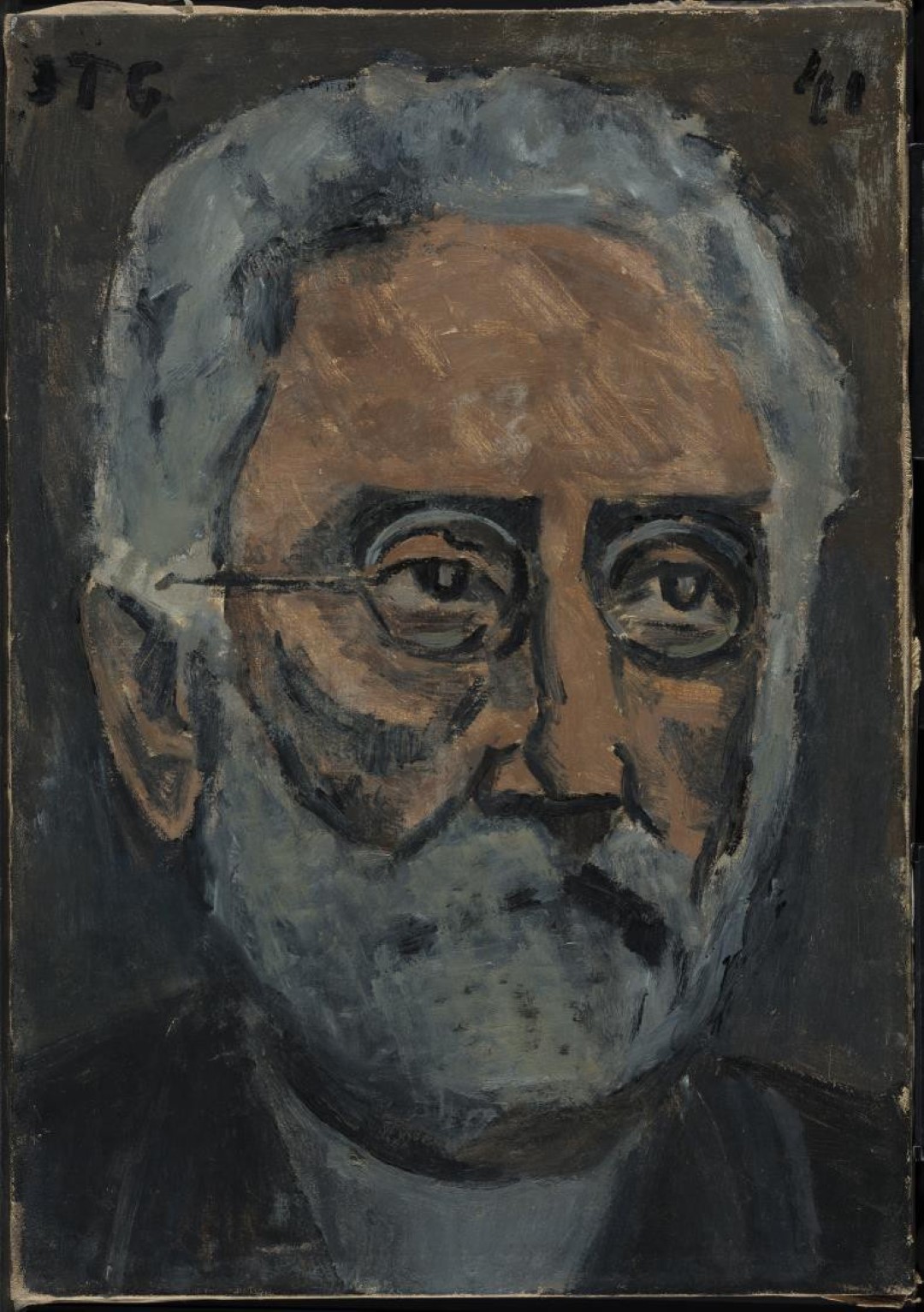
A retrospective exhibition on the works of Joaquín Torres García: The Arcadian Modern, (25. Oct. 2015–15. Feb. 2016) in MoMa, left out his caricature studies completely (a large series of distorted portraits of well-known people, which he made late in his life). The above portrait is not part of this series.
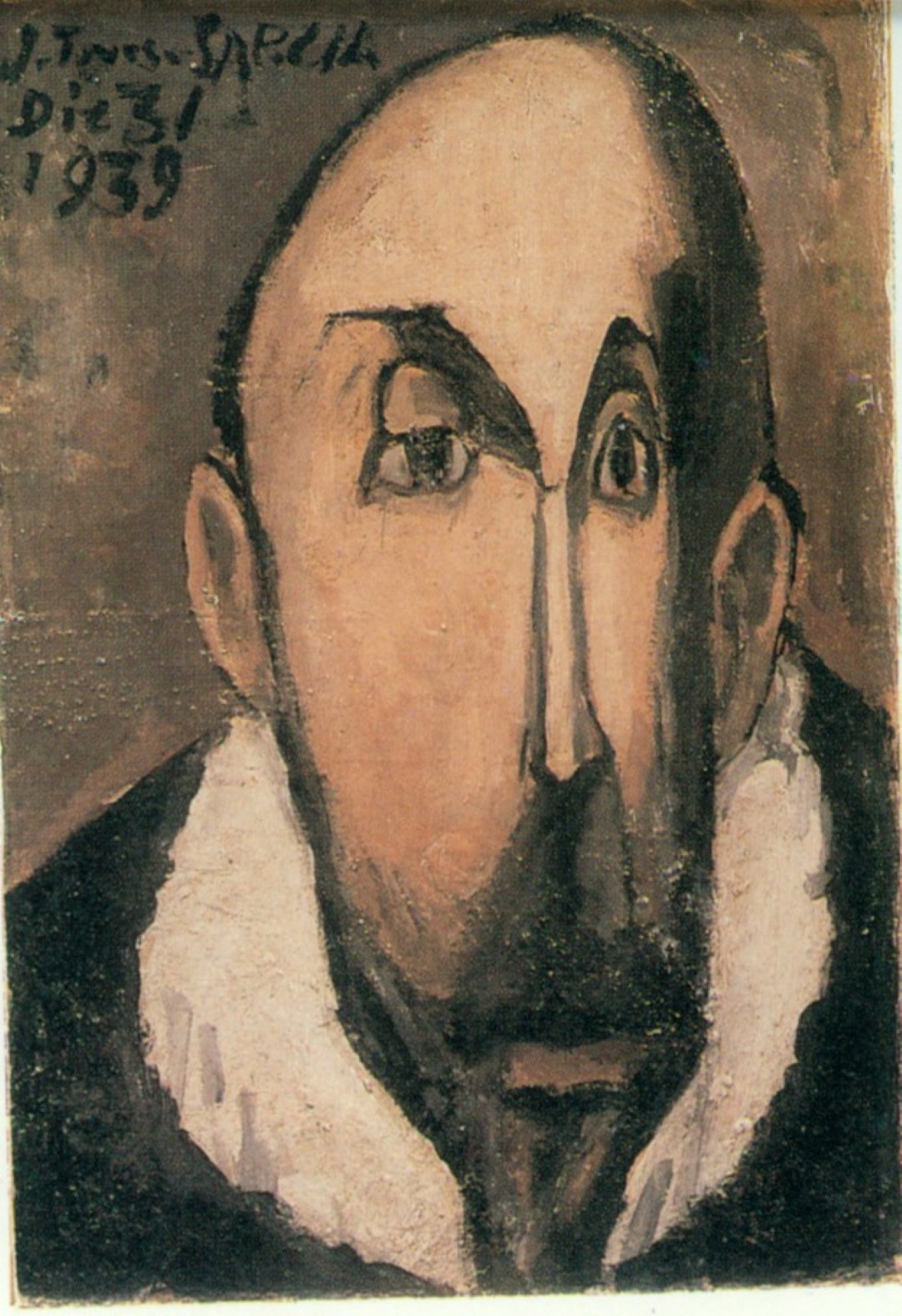
Thinking Structures
An often-used method to visualise historical data is using a linear-framework-thinking-structure; displaying the development of single actors related to events. Multiple actors can be stacked on top of each other, resulting in a table-shaped-structure.

Example of linear-framework-thinking visualised, source: google images, subsource: The Berkemeyer Project
Another more advanced method, is the Tree(data)-structure, with root values and sub-trees [Parent-Child relationship]. In this form of visualising historical data, the various relationships between actors and their exchange of knowledge becomes more visible.
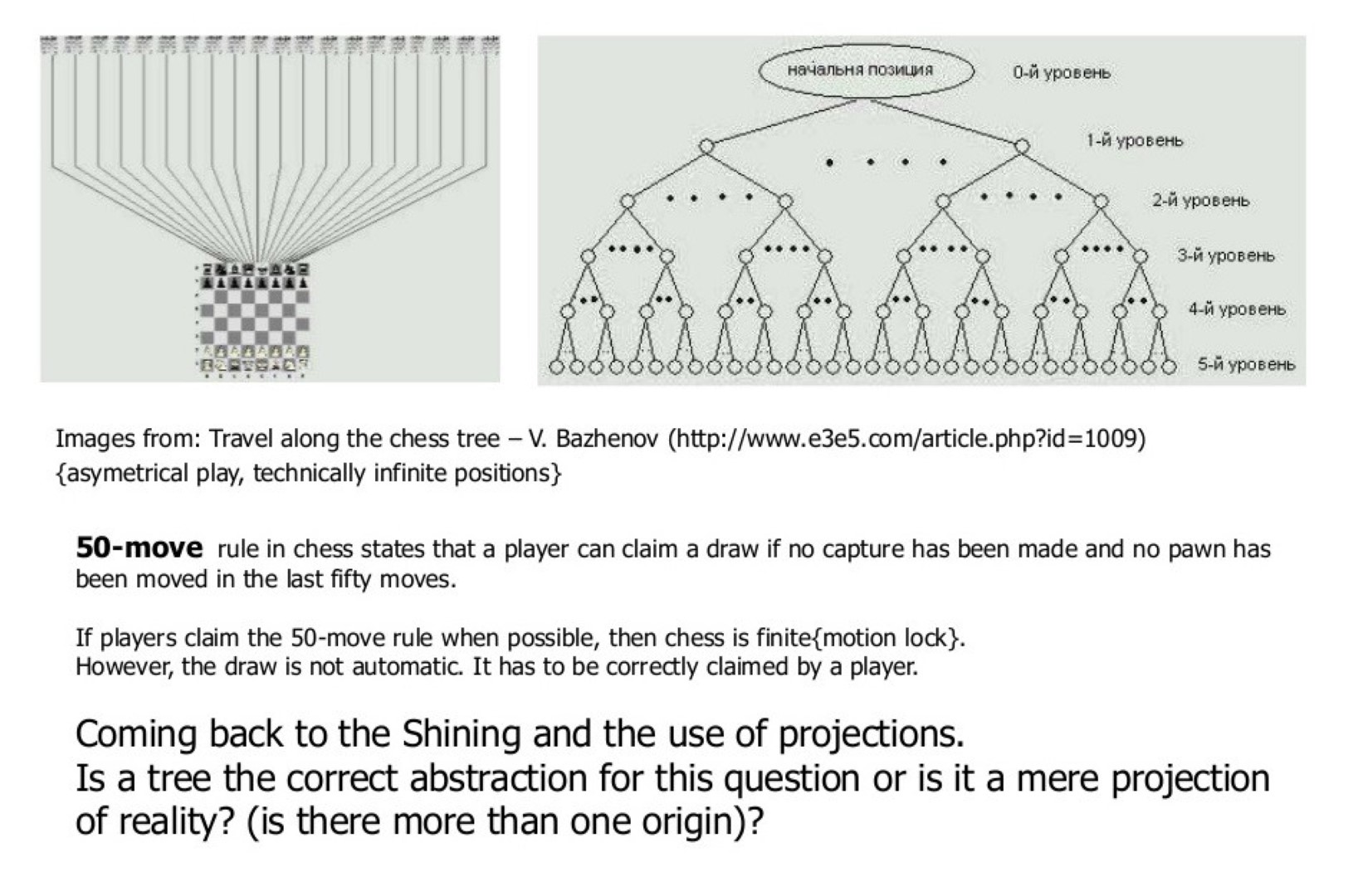
Visualising data in sequential order [Chronos] has a great impact on how we describe and communicate history. It affects the order of museum collections and exhibitions (almost all have a chronological set-up), but also the storytelling mechanisms used to transmit history in educational books and oral speech.
This not only affects the way we teach children to deal with historical data, but it also influences their own thinking structure. It brings our creative thinking, and creative problem solving to an end.
M stands for Murder
The common notion exists that a linear trajectory is the only “logical” and “factual” method of describing history. The recording of the act, and the occurrence of the act are not the same, nevertheless we describe and transmit them as one of the same kinds. A causes B, B causes C, C causes D, and so on, and so on. It just becomes a question of finding the origin, a form of quantitative analysis.
And if things don’t add up, we just fix the glitch; we leave out information and present it as a complete, logical step-by-step storyline.
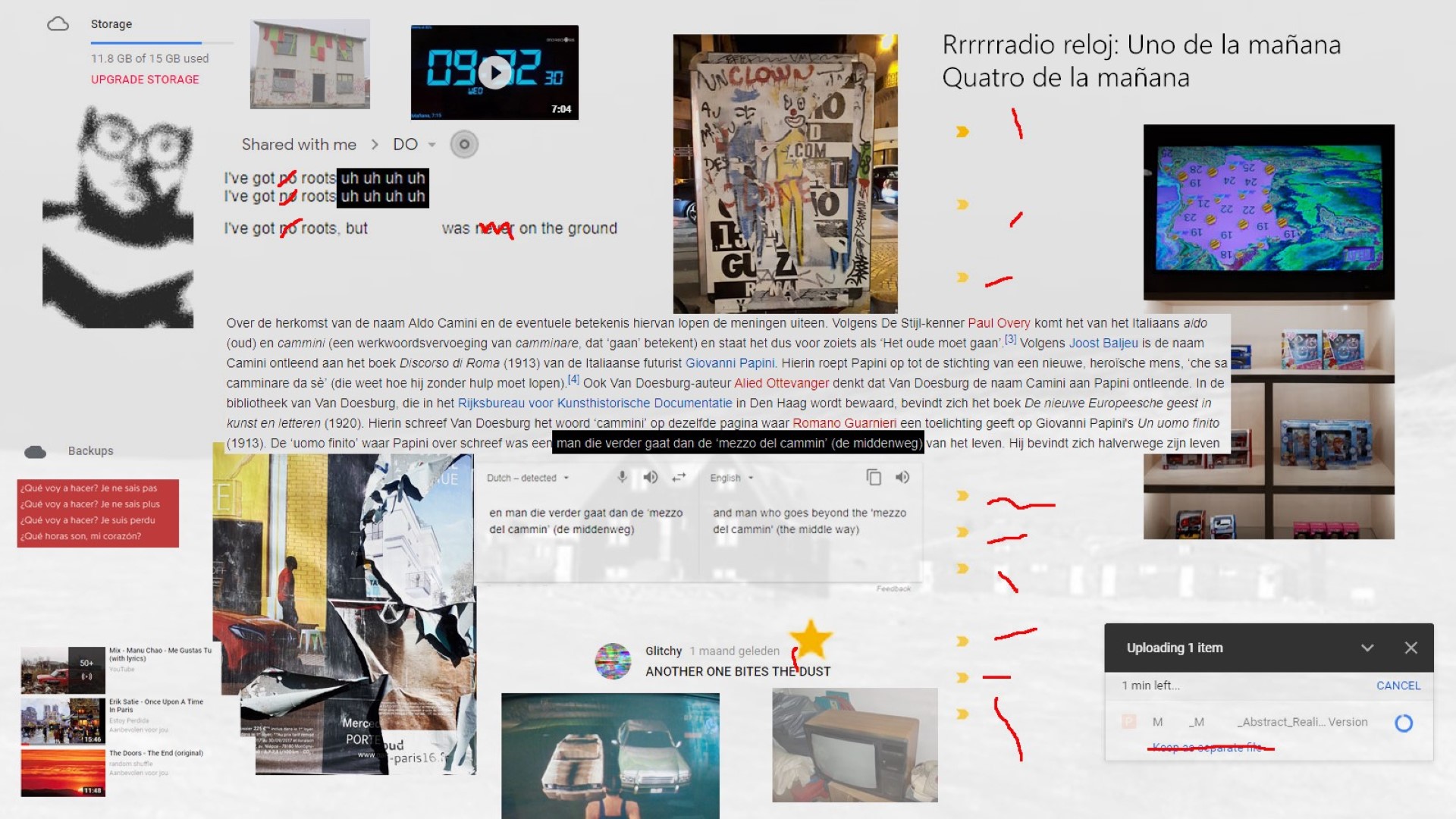
However, when a murder is committed, and we want to solve the case; we cannot make use of the linear-framework, nor the tree-structure.
In the case of a murder-case, parts of history are blurred, scrambled, deformed, left out or unknown; so we have to “invent” our own thinking structure; falling back on emotion [Kairos]; mapping the opportune moments that occurred in time ~ space. We neglect this notion when describing general history, which in some cases leads to false positions and conclusions.

A man has a fox, a rabbit, and a cabbage, and he wants to get across the river, but his boat can only carry one of them at a time. The problem is if the man leaves the fox and the rabbit alone, the fox is gonna eat the rabbit and the same for the rabbit and the cabbage. So how does the man get across the river without losing any of them? Agent Budge questioning Agent Pepper, but solved by Lester{M.} — riddle from Fargo, season 1, episode 8 {A Fox, a Rabbit and a Cabbage}
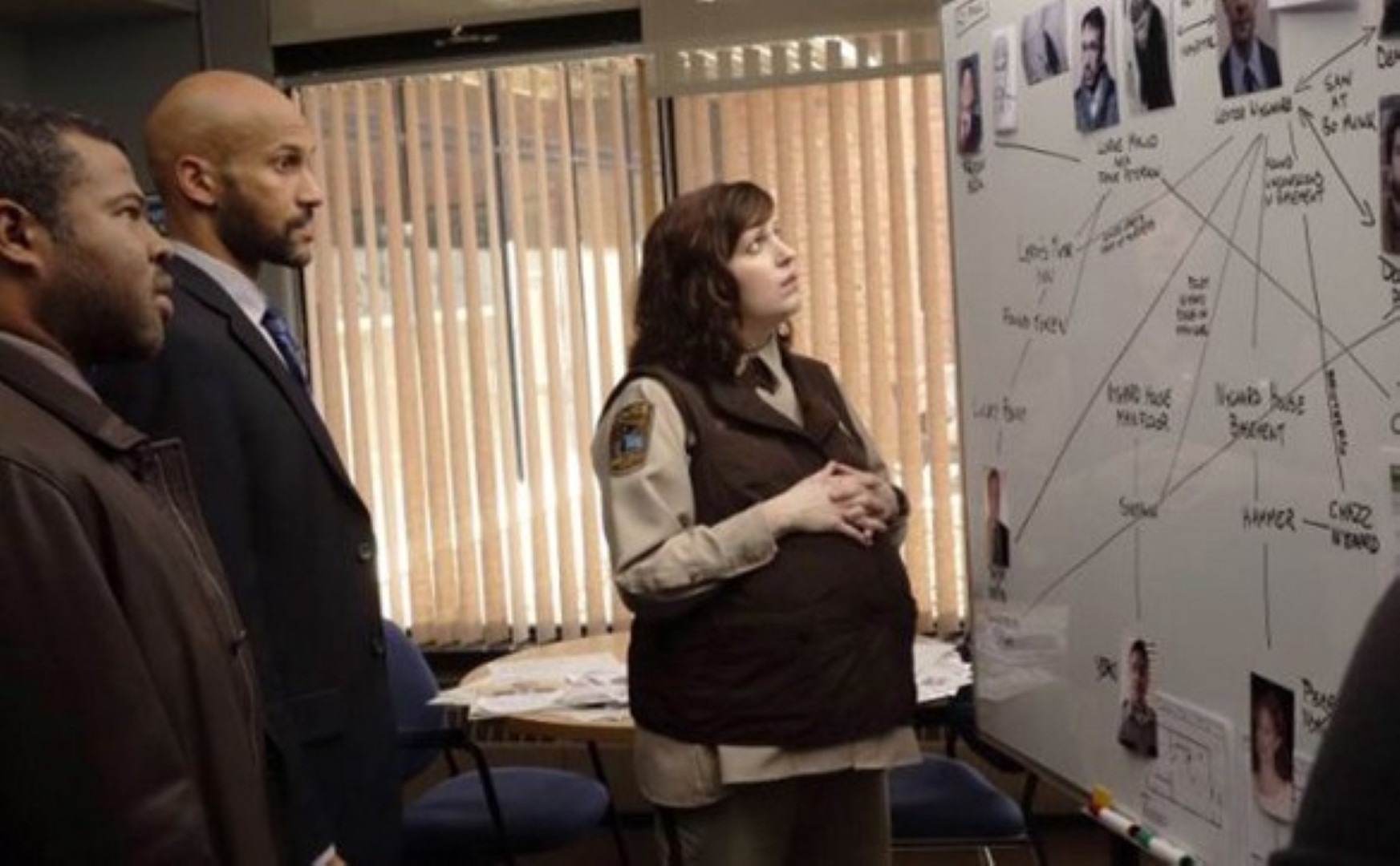
Space-Platform-Creation; Mechanics of De Stijl

Now that you are introduced to the first steps of Dimensional Design, we discuss an example to explain its practical use. As I mentioned before, I believe the position of Theo van Doesburg in the story of De Stijl (and the history of art in general) is misinterpreted. His work must fit in the existing linear-framework-thinking-structure; this means he is fixated in one point in time ~ space.
Parts of the story are scrambled; these parts are considered non-logical, non-essential; the recording is edited to make-fit into a seemingly logical story, which is presented as true-reality.
Theo van Doesburg positioned himself in multiple positions in time ~ space; as a fox playing hypermodern chess. He is therefore much more difficult to grasp. To better understand how he played, I created the following maps.
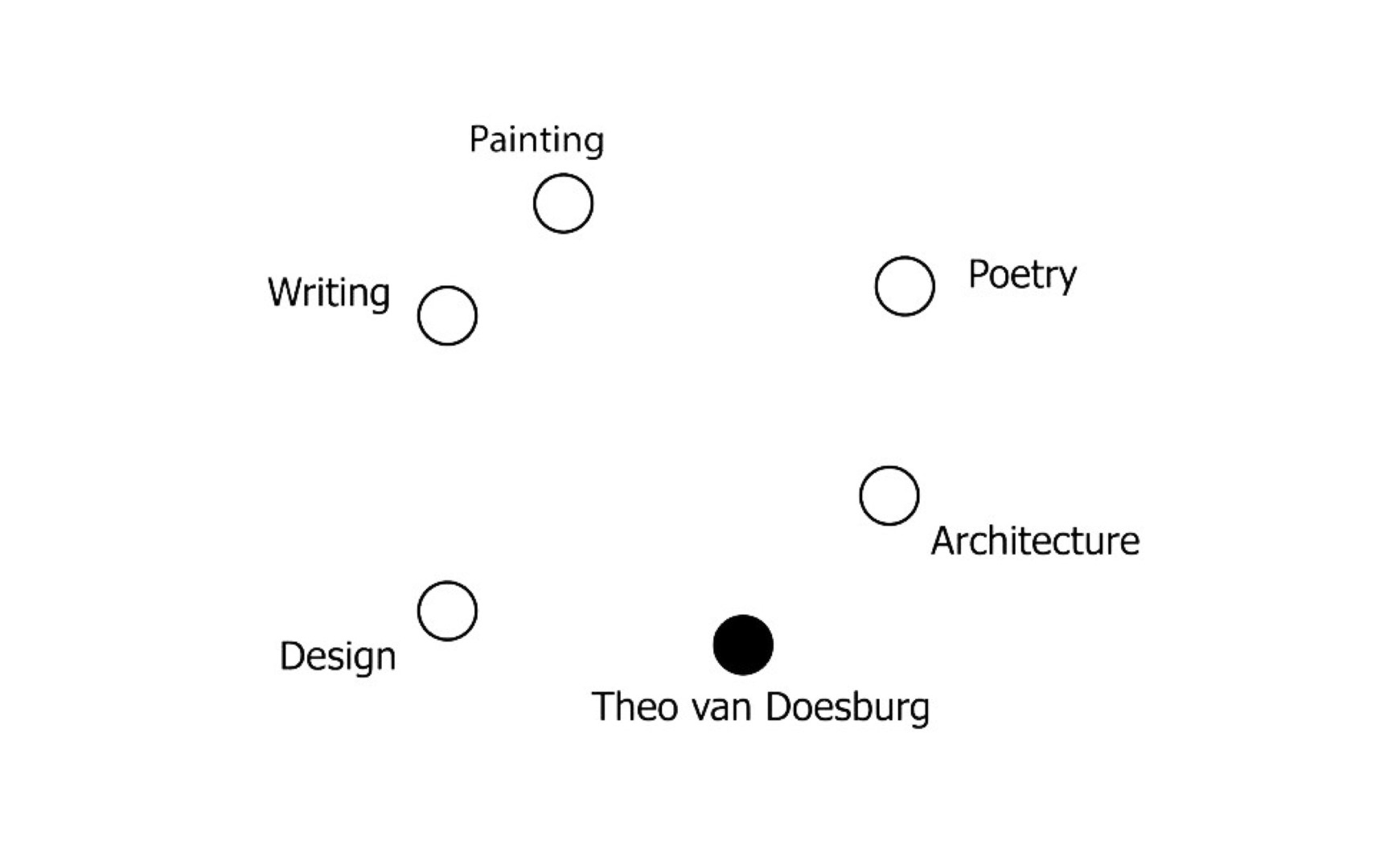
Space-platform-creation; Excerpt 3/7 Abstract : Reality [Language], M.© 2018
Theo van Doesburg considered the world-of-art to be a complete-united-entity. [Gesamtkunstwerk].
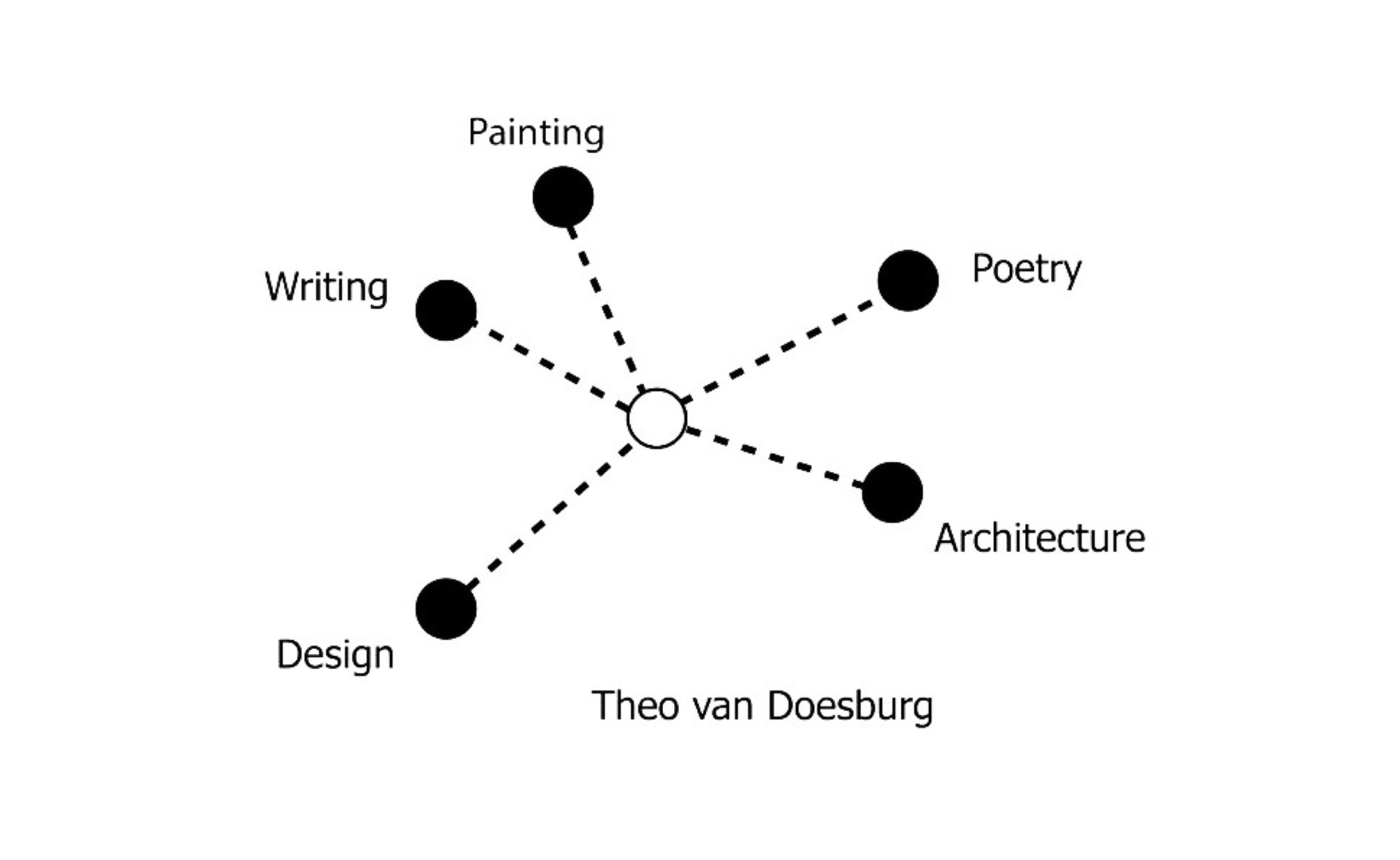
He therefore formed statements (which often conflict with one-another, if you try to arrange them in a sequential order), in a variety of artistic disciplines; writing, design, poetry, art and architecture. A first beginning of De Stijl.

[De Stijl]* (1917–1931) was the name given to the new overarching Abstract-art-movement {Magazine-as-Manifest} (1st. edition Oct. 1917).
Space-Platform-Creation by Theo van Doesburg, considering the multiple aspects of art and its supposed role in society.
*[Placeholder] : {De Rechte Lijn {The Straight Line}, which was supposed to be the name for the Magazine-as-Manifest was changed before its first publication, by Theo van Doesburg in: “De Stijl”}

Theo van Doesburg [as a point in time ~ space] dissolved into the mechanism of De Stijl; Van Doesburg cannot be placed anymore in one position.
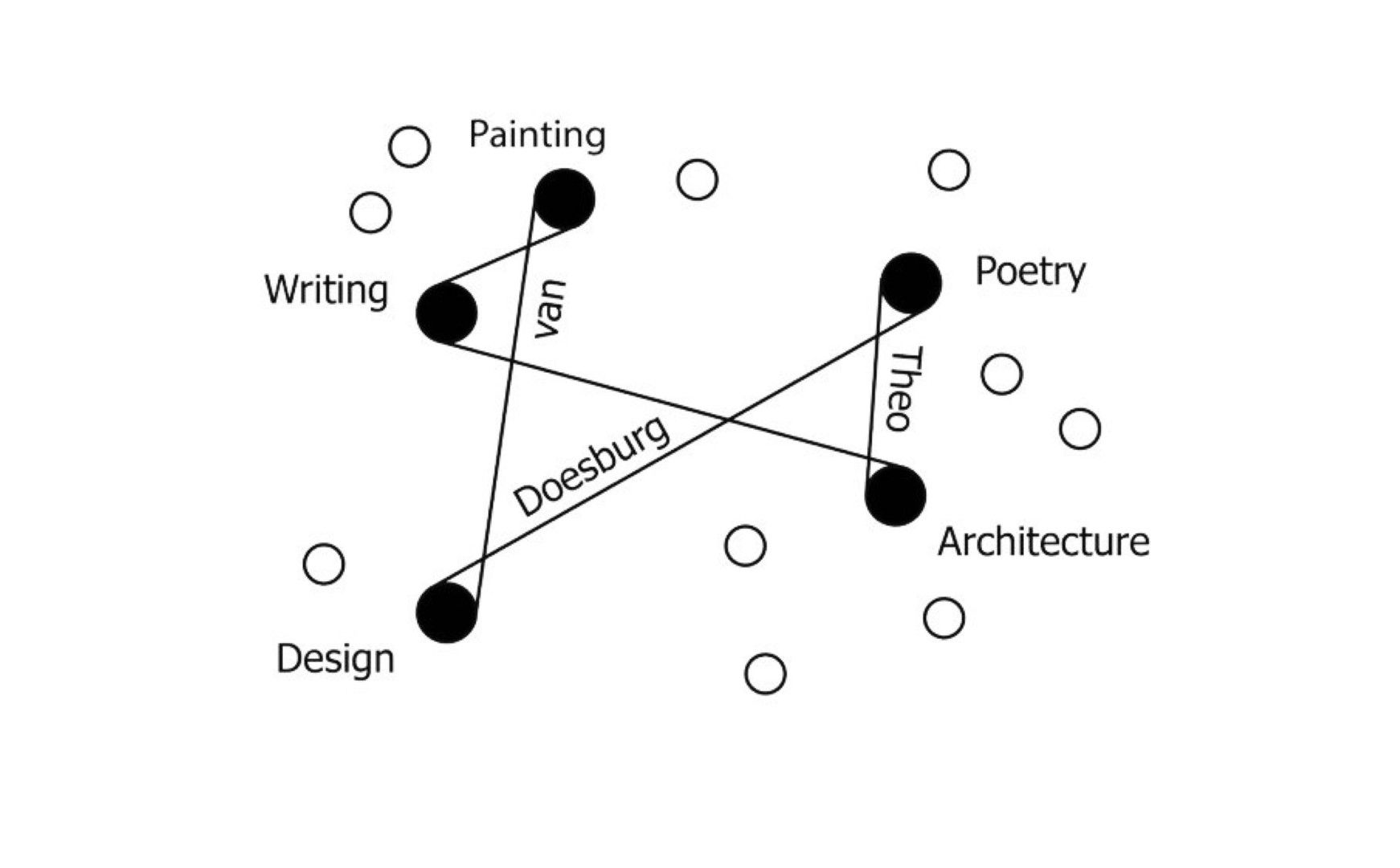
At a certain moment other unknown points of interest light up around its mechanism.
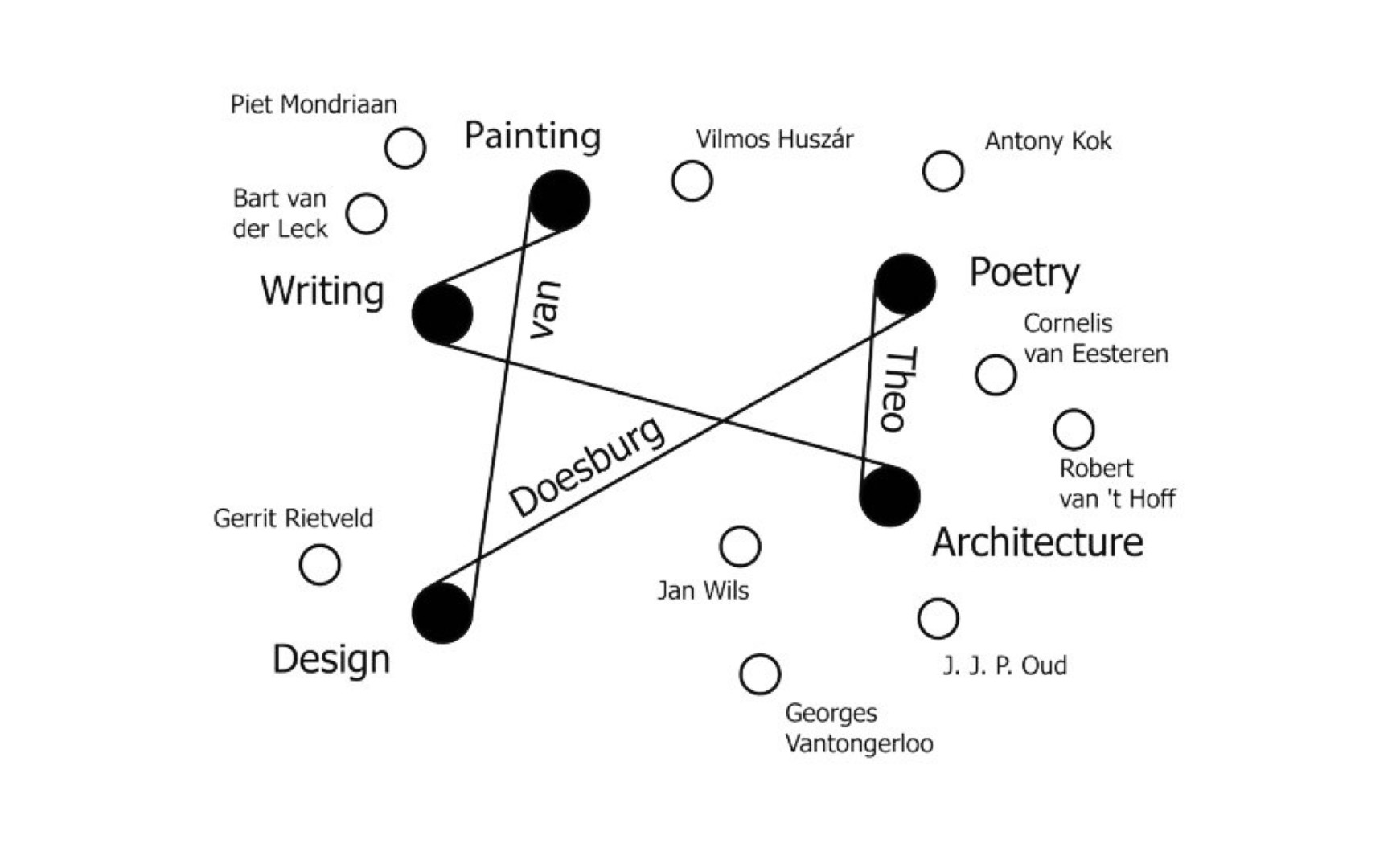
Behind these points we discover names. We try to find the origin of the movement in these names, which leads to false positioning and conclusions.
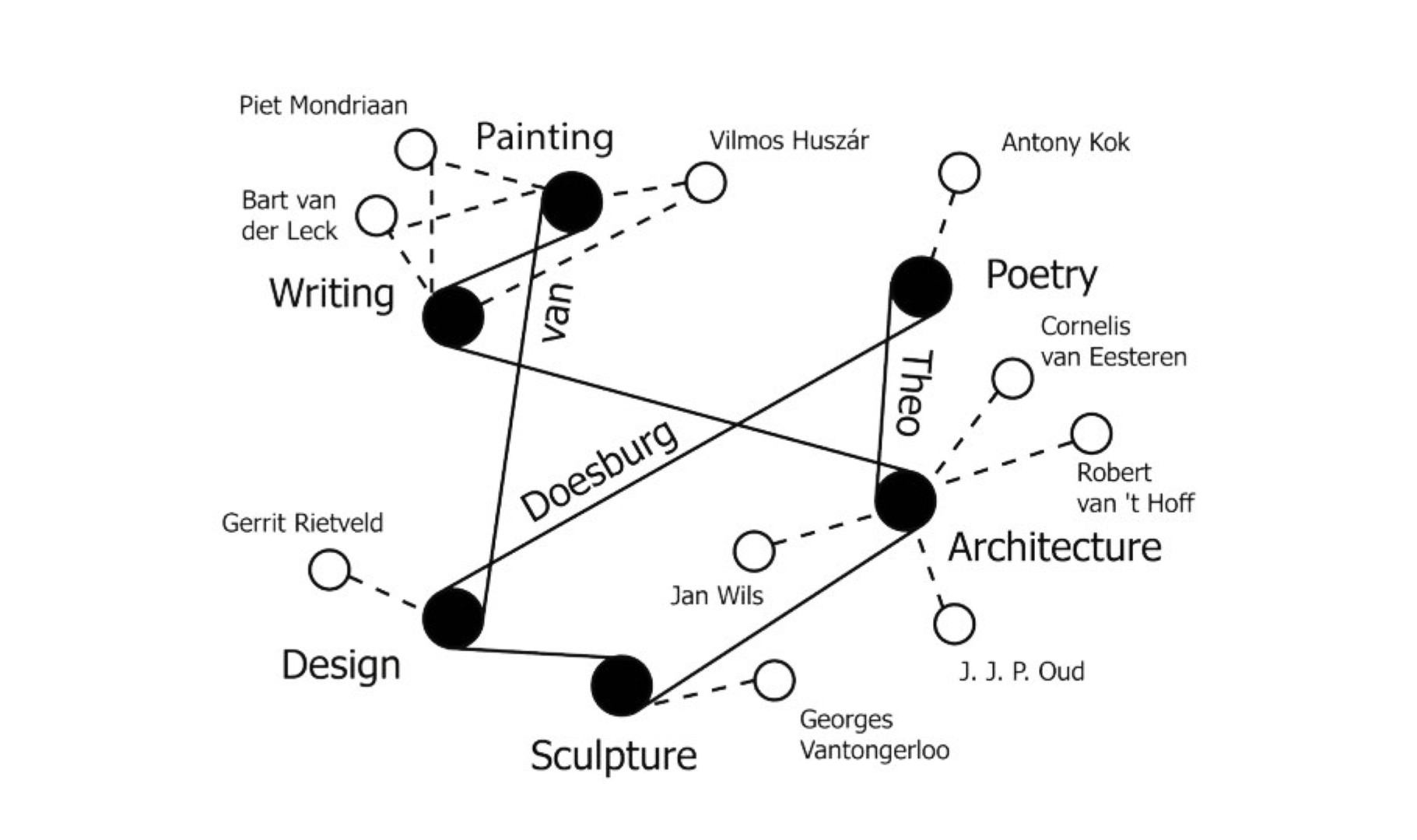
These names could attach themselves to the mechanism, even extend it in certain directions, together creating a movement. This is the final step of Space-Platform-Creation.
{Theo van Doesburg} : Introduction into Dimensional Design. Excerpt from a larger story. © M. Production 10.2019 Triple-A Society
.
Many famous musicians in the 19th century remained unknown until 100 years later when people became able to understand their works. Playing hypermodern openings (for example, Reti opening, and King’s Indian Attack which differs from KID) need deep understandings about various structures caused by the flexibility of pawns, and it’s really difficult for most players to handle these.
As the first comment says, hypermodern openings have special ideas involved, which are against the “tradition” opening ideas.